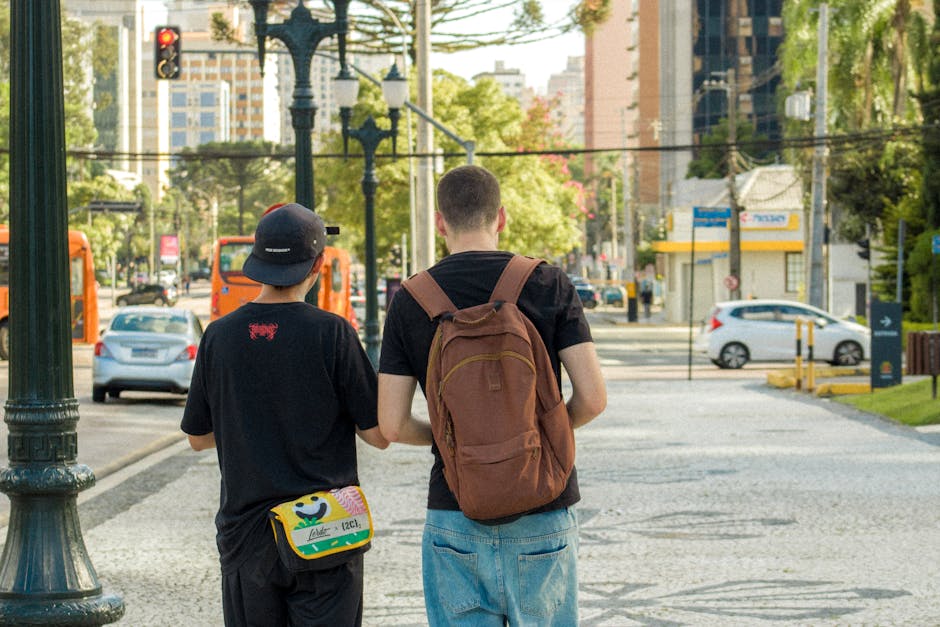Exploring the Role of Youth in Social Movements
When we think of social movements, we often picture passionate individuals coming together to advocate for change, challenge the status quo, and make a positive impact on society. In recent years, the role of youth in shaping these movements has become increasingly prominent. From climate change activism to racial justice protests, young people around the world are leading the charge for a more equitable and sustainable future. But what exactly is the role of youth in social movements, and why are they so crucial to driving meaningful change?
In this comprehensive guide, we will delve deep into the world of social movements and explore the pivotal role that young people play in shaping them. We will examine the historical context, current trends, and future implications of youth involvement in social activism. Through real-life examples, case studies, and in-depth analysis, we will uncover the power of youth voices and their potential to drive transformative social change.
The Historical Roots of Youth Activism

Throughout history, young people have played a crucial role in social movements and revolutions. From the student protests of the 1960s to the Arab Spring uprisings of the 2010s, youth have often been at the forefront of challenging oppressive systems and advocating for justice. The energy, idealism, and fearlessness of youth make them natural leaders in movements for social change.
One of the most iconic examples of youth activism in history is the Civil Rights Movement in the United States. Young people, including students from historically black colleges and universities, played a key role in organizing sit-ins, marches, and protests to demand an end to segregation and racial discrimination. Their courage and determination inspired a generation and ultimately led to landmark civil rights legislation.
Today, young activists are continuing this legacy by advocating for a wide range of social justice issues, from gun control to LGBTQ rights. The rise of social media has enabled young people to connect, organize, and mobilize like never before, amplifying their voices and expanding their reach. Platforms like Twitter, Instagram, and TikTok have become powerful tools for spreading awareness, building solidarity, and driving collective action.
Youth-Led Movements Around the World

In recent years, we have witnessed a surge in youth-led movements that have captured the world’s attention and sparked widespread social change. One of the most notable examples is the global climate strike movement, inspired by Swedish activist Greta Thunberg. Young people from around the world have taken to the streets to demand urgent action on climate change, calling on governments and corporations to prioritize sustainability and environmental justice.
Another powerful youth-led movement is the Black Lives Matter movement, which emerged in response to police violence and systemic racism in the United States. Young activists, particularly from black and marginalized communities, have been instrumental in organizing protests, raising awareness, and advocating for police reform and racial justice. Their tireless efforts have sparked a reckoning on race and inequality, leading to tangible policy changes and cultural shifts.
These examples demonstrate the transformative potential of youth-led movements in addressing pressing social issues and catalyzing meaningful change. By harnessing the collective power of young people, these movements have been able to challenge entrenched power structures, shift public discourse, and inspire solidarity across borders.
The Intersectionality of Youth Activism

It is important to recognize that youth activism is not monolithic but intersectional, encompassing a diverse array of perspectives, identities, and experiences. Young people from different backgrounds and communities bring unique insights and priorities to social movements, enriching the dialogue and ensuring that a wide range of voices are heard.
Intersectional youth activism acknowledges the interconnected nature of social justice issues, recognizing that issues like racism, sexism, classism, and environmental degradation are deeply intertwined. By adopting an intersectional approach, youth activists are able to build more inclusive and effective movements that address the root causes of injustice and work towards holistic solutions.
For example, in the fight for climate justice, young activists are highlighting the disproportionate impact of environmental degradation on marginalized communities, particularly communities of color and low-income communities. By centering the voices and experiences of those most affected by climate change, youth-led movements are advocating for policies and practices that prioritize equity, justice, and sustainability.
The Challenges and Opportunities of Youth Activism

While youth activism holds immense potential for driving social change, it also comes with its own set of challenges and obstacles. Young activists often face backlash, criticism, and repression from authorities, institutions, and even their peers. The idealism and passion of youth can be met with skepticism and resistance, particularly from those who are resistant to change.
Moreover, the digital age has created new complexities for youth activists, including issues of online harassment, misinformation, and burnout. The constant pressure to be visible, engaged, and effective can take a toll on young activists, leading to mental health challenges and exhaustion. It is essential for supporters and allies to provide a supportive and nurturing environment for young activists to thrive and continue their important work.
Despite these challenges, youth activism also presents unique opportunities for innovation, collaboration, and impact. Young people are often more adept at leveraging technology, building networks, and mobilizing resources, making them well-equipped to drive change in the digital age. Their fresh perspectives, creative approaches, and bold actions have the power to inspire and galvanize broader movements for social justice.
The Future of Youth Activism
As we look to the future, the role of youth in social movements is only set to grow in importance and influence. Young people are the leaders and change-makers of tomorrow, shaping the world they will inherit and leaving a lasting impact on society. By empowering and supporting youth activists, we can create a more just, equitable, and sustainable future for all.
It is crucial for individuals, organizations, and governments to listen to and center the voices of young people in decision-making processes, policy development, and social change efforts. By valuing and amplifying youth perspectives, we can build stronger, more resilient communities and institutions that reflect the values and aspirations of all members of society.
Ultimately, the role of youth in social movements is a testament to the power of collective action, solidarity, and hope. Young people have the passion, creativity, and vision to challenge the status quo, reimagine the future, and build a more just and sustainable world for generations to come. Their voices must be heard, their actions supported, and their leadership celebrated as we work together to create a better future for all.
Common Misconceptions
One common misconception about youth activism is that young people are too inexperienced or naive to make a meaningful impact on social movements. In reality, youth activists bring fresh perspectives, innovative solutions, and unwavering commitment to the causes they champion. Their energy and idealism can inspire others and drive significant change.
Comparative Analysis
Comparative analysis of youth activism across different cultures and regions can reveal the diverse strategies, tactics, and priorities of young activists around the world. By examining the similarities and differences in youth-led movements, we can gain valuable insights into the universal challenges and opportunities of youth activism.
FAQs
1. How can I support youth activists in their work?
2. What are some ways to get involved in youth-led movements?
3. How can I amplify the voices of young activists in my community?
To wrap things up, the role of youth in social movements is more vital and impactful than ever before. Young people are driving transformative change, challenging injustice, and shaping the future of our world. By recognizing, valuing, and supporting youth activism, we can build a more equitable, inclusive, and sustainable society for all.




